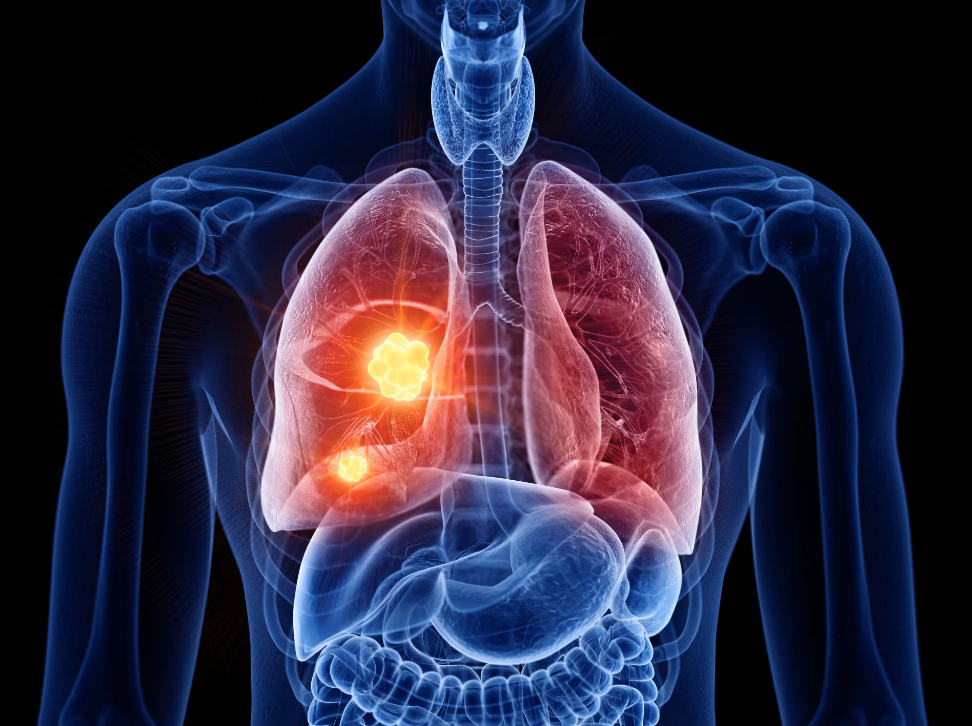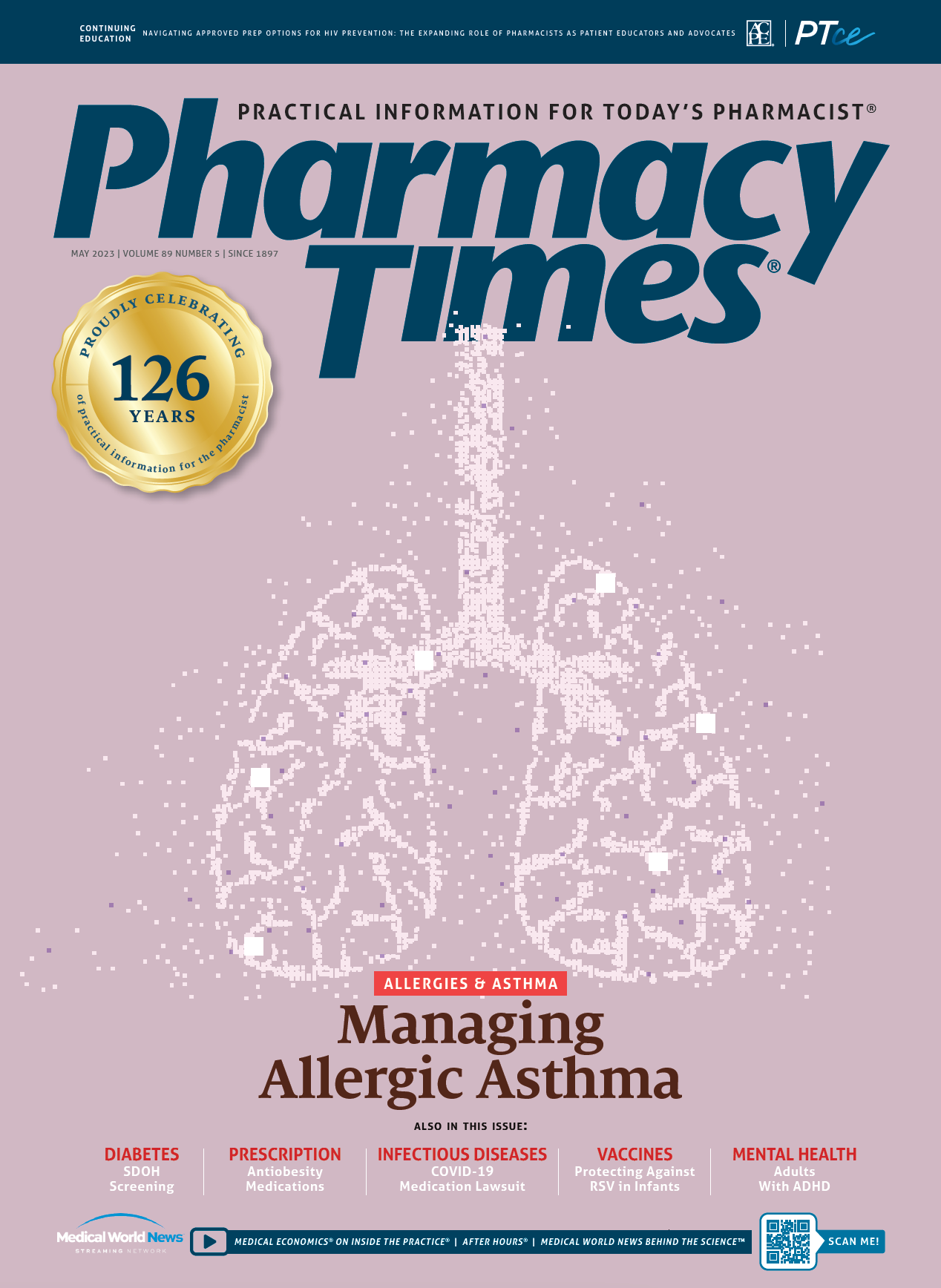Publication
Article
Krazati From Mirati Therapeutics
Author(s):
Adagrasib is a RAS GTPase family inhibitor with objective response rate in patients with certain types of locally advanced or metastatic non–small cell lung cancer (NSCLC).
The FDA has approved adagrasib oral tablets (Krazati; Mirati Therapeutics, Inc) to treat adults with KRAS G12C–mutated locally advanced or metastatic non–small cell lung cancer (NSCLC), as determined by an FDA-approved test, who have received at least 1 prior systemic therapy. The drug received accelerated approval based on duration of response (DOR) and objective response rate (ORR), and continued approval for this indication may be contingent upon confirmatory trials.1 Approximately 85% of lung cancer cases are NSCLC, with KRAS G12C being the most common KRAS mutation. It occurs in approximately 14% of patients with lung adenocarcinoma and being a biomarker mutation of poor prognosis.2
Image Credit: Adobe Stock - SciePro

Pharmacology and Pharmacokinetics
Adagrasib is an inhibitor of the RAS GTPase family. It covalently binds to the mutant cysteine in KRAS G12C and locks the mutant KRAS protein in its inactive state, preventing downstream signaling without affecting the wild-type KRAS protein. Adagrasib inhibits tumor cell growth and viability in cells with KRAS G12C mutations and leads to tumor regression in KRAS G12C–mutated tumor xenograft models with minimal off-target activity. Its median time to maximum plasma concentration is 6 hours, and it reaches steady-state concentrations within 8 days of oral administration. Adagrasib displays a terminal elimination half-life of 23 hours.1
Dosage and Administration
The recommended dose of adagrasib is 600 mg orally twice daily. It should be swallowed whole at the same time every day and may be taken with or without food. Adagrasib is supplied as a 200-mg tablet.1
Clinical Trials
Adagrasib was evaluated for efficacy in a multicenter, open-label, single-arm expansion cohort study (KRYSTAL-1; NCT03785249) of 112 participants with locally advanced or metastatic KRAS G12C–mutated NSCLC who previously received treatment with an immune checkpoint inhibitor and a platinum-based regimen, had an ECOG performance status of 0 or 1, and had at least 1 measurable lesion as defined by RECIST v1.1. Participants received adagrasib 600 mg orally twice daily until disease progression or unacceptable toxicity occurred, with tumor assessment every 6 weeks. The primary efficacy end points were confirmed DOR and ORR as evaluated by blinded independent central review according to RECIST v1.1. The study demonstrated a median DOR of 8.5 months and an ORR of 43%.1,2
Contraindications, Warnings, and Precautions
There are no contraindications to treatment with adagrasib. Because adagrasib can cause severe gastrointestinal adverse reactions, patients should be monitored for diarrhea, nausea, and vomiting and be managed with supportive care as needed. Adagrasib can cause QTc interval prolongation and should not be used in combination with other agents that may prolong the QTc interval. Adagrasib can cause hepatotoxicity. Liver laboratory tests should be assessed prior to the start of adagrasib and every month for 3 months thereafter and as clinically indicated. Adagrasib can cause interstitial lung disease (ILD) or pneumonitis, which can be fatal. Patients using adagrasib should be monitored for new or worsening respiratory symptoms. Adagrasib should be withheld if ILD or pneumonitis is suspected and be permanently discontinued if no other causes of ILD or pneumonitis are identified. Patients should not breastfeed while using adagrasib.
Adagrasib should not be used concomitantly with strong cytochrome P450 (CYP) 3A4 inducers, and it should not be used with strong CYP3A4 inhibitors until adagrasib reaches steady-state plasma concentrations.
Use of adagrasib should be avoided in combination with sensitive CYP3A4, CYP2C9, CYP2D6, or P-glycoprotein substrates, in which small changes in concentration may result in serious adverse reactions.
The most common adverse reactions were decreased appetite, diarrhea, dyspnea, edema, fatigue, hepatotoxicity, musculoskeletal pain, nausea, renal impairment, and vomiting. The most common grade 3 or 4 laboratory abnormalities were decreased hemoglobin, decreased leukocytes, decreased lymphocytes, decreased neutrophils, hypokalemia, hyponatremia, increased alanine aminotransferase, increased alkaline phosphatase, increased aspartate aminotransferase, and increased lipase.1
References
1. Krazati. Prescribing information. Mirati Therapeutics Inc; 2022. Accessed January 27, 2023. https://www.accessdata.fda.gov/drugsatfda_docs/label/2022/216340s000lbl.pdf
2. Mirati Therapeutics announces U.S. FDA accelerated approval of Krazati (adagrasib) as a targeted treatment option for patients with locally advanced or metastatic non-small cell lung cancer (NSCLC) with a KRASG12C Mutation. News release. Mirati Therapeutics. December 12, 2022. Accessed January 27, 2023. https://ir.mirati.com/press-releases/press-release-details/2022/Mirati-Therapeutics-Announces-U.S.-FDA-Accelerated-Approval-of-KRAZATI-adagrasib-as-a-Targeted-Treatment-Option-for-Patients-with-Locally-Advanced-or-Metastatic-Non-Small-Cell-Lung-Cancer-NSCLC-with-a-KRASG12C-Mutation/default.aspx
About the Author
Monica Holmberg, PharmD, BCPS, is a pharmacist in Phoenix, Arizona, and a Pharmacy Times contributor.






